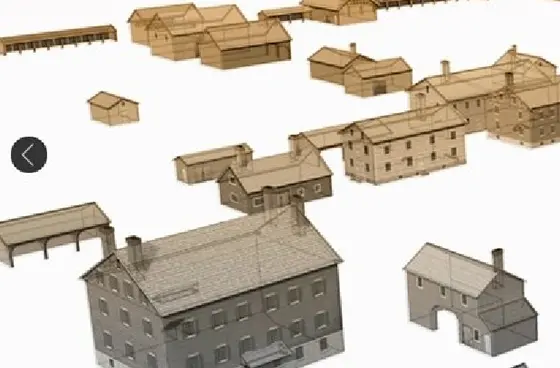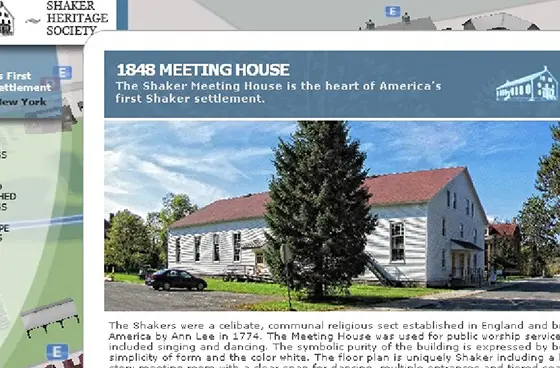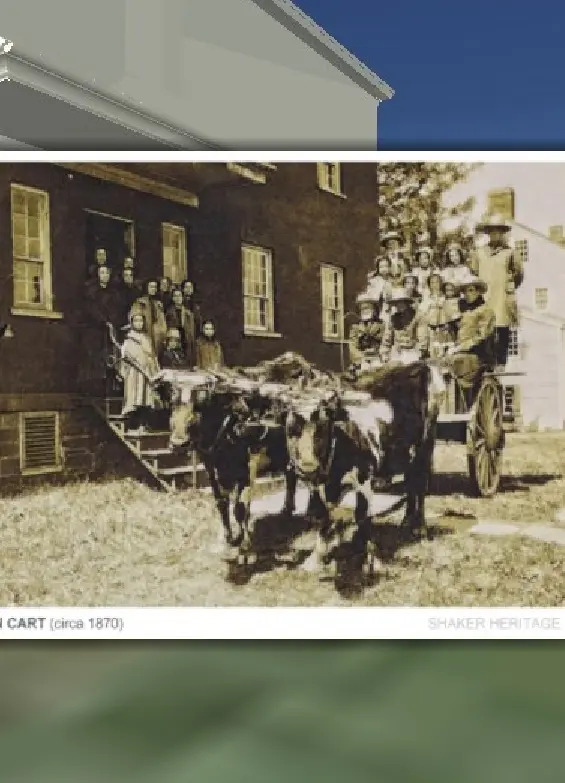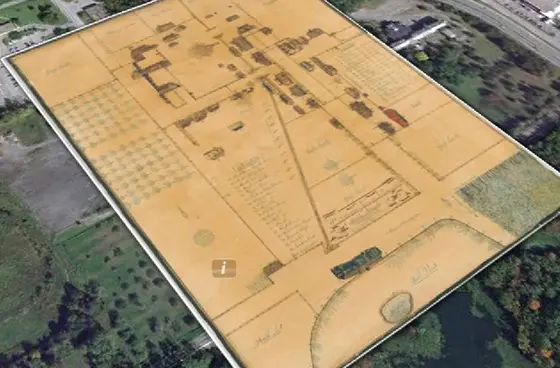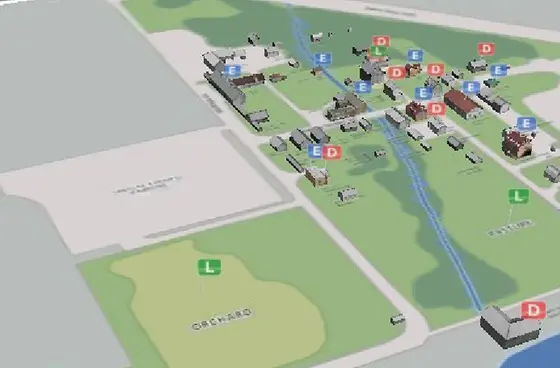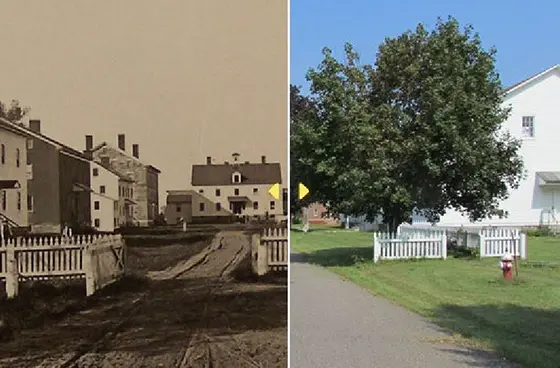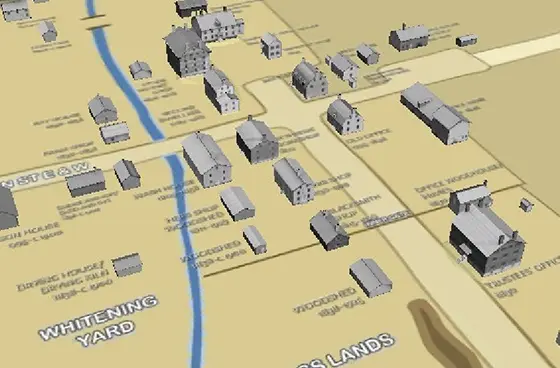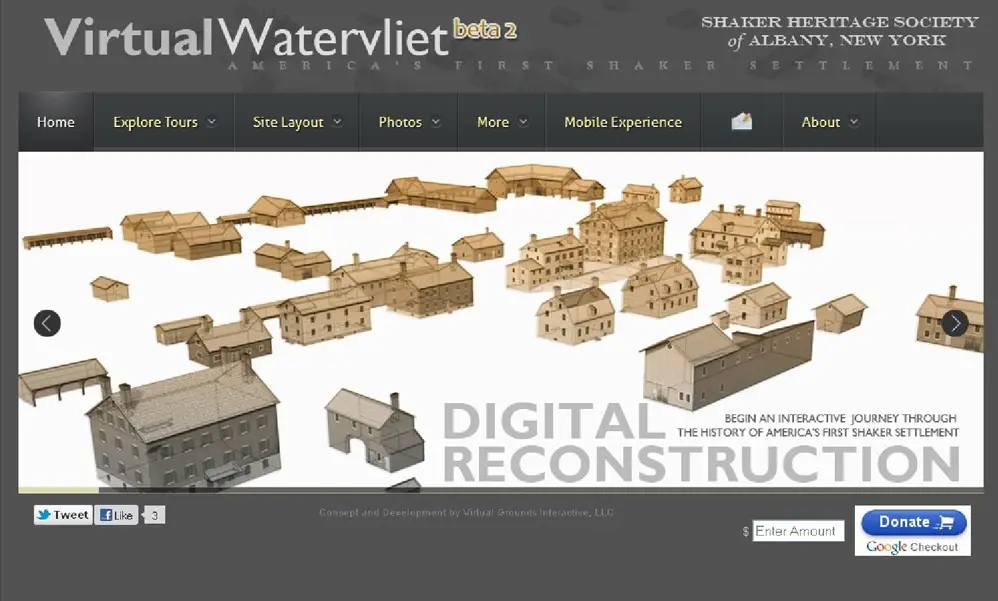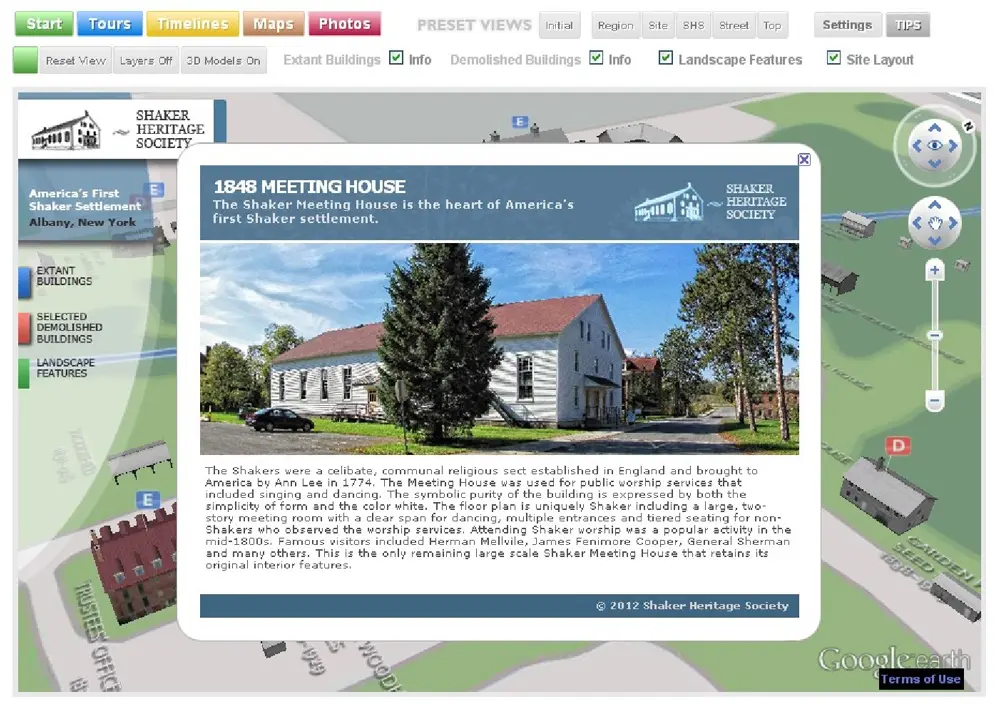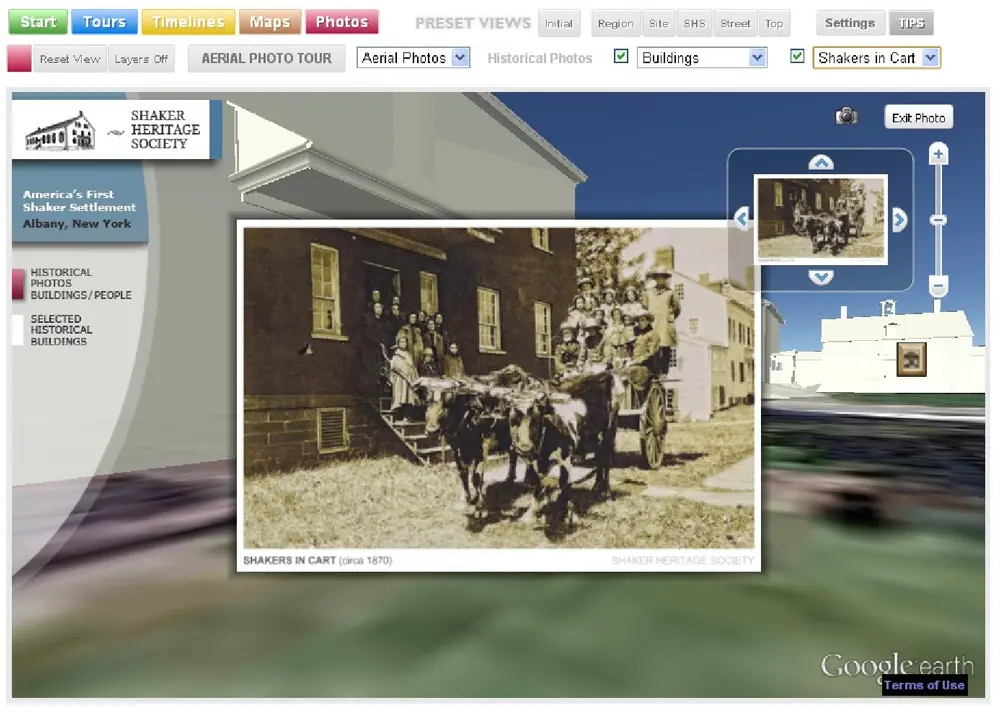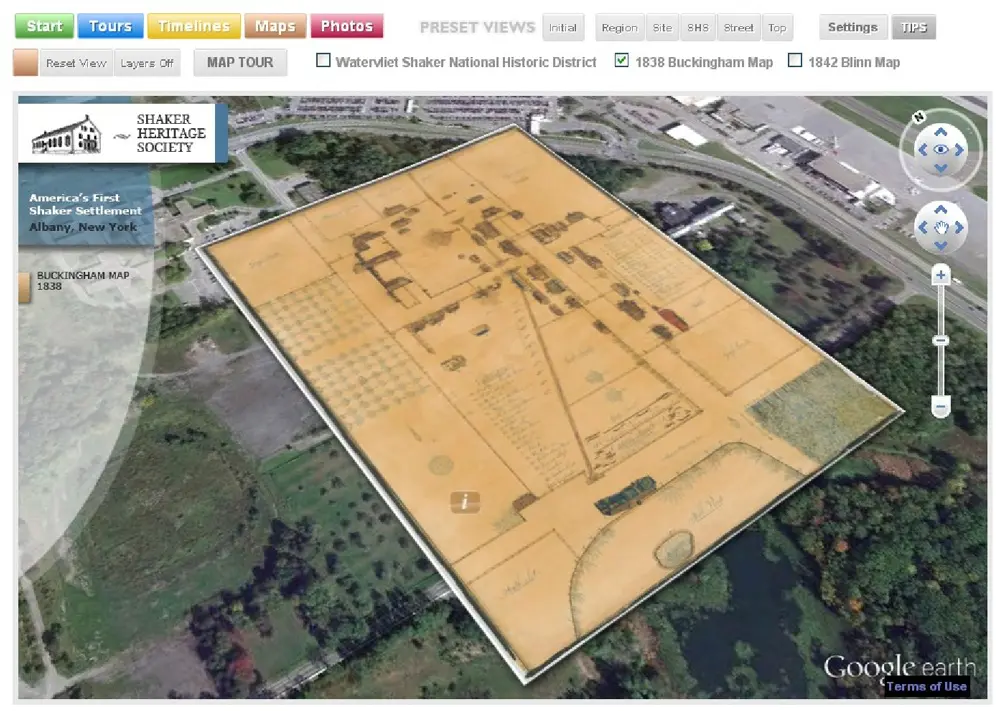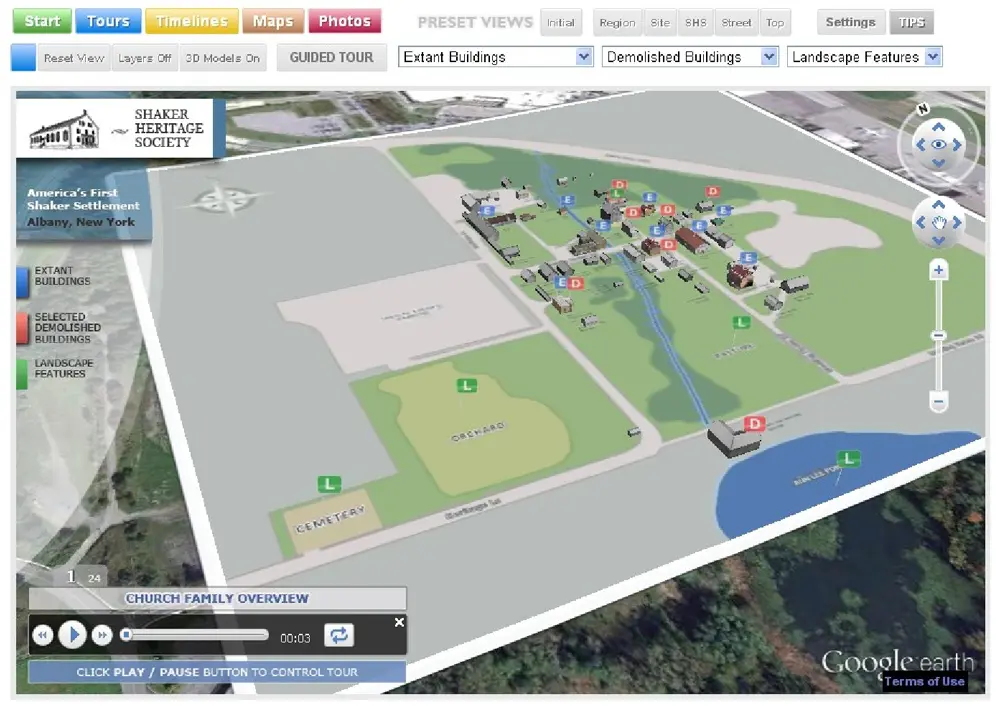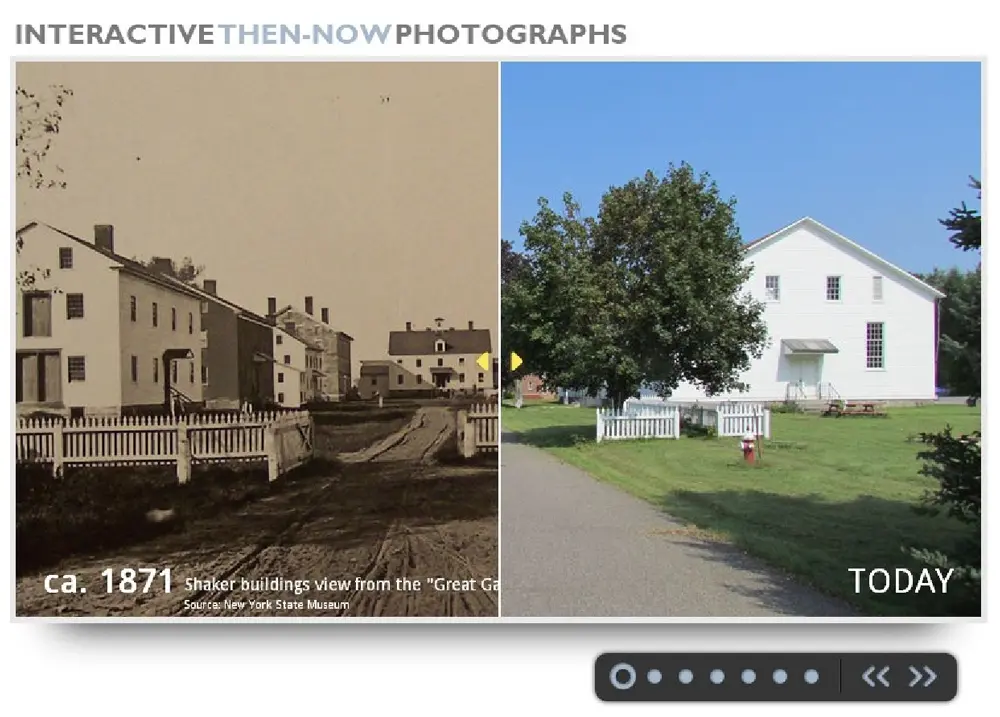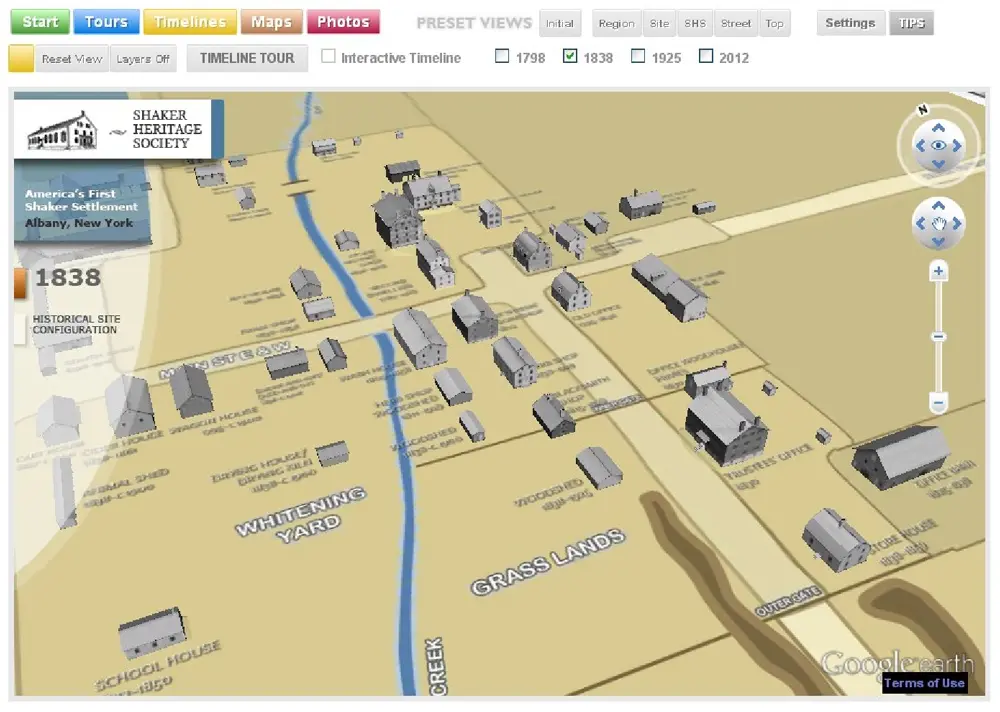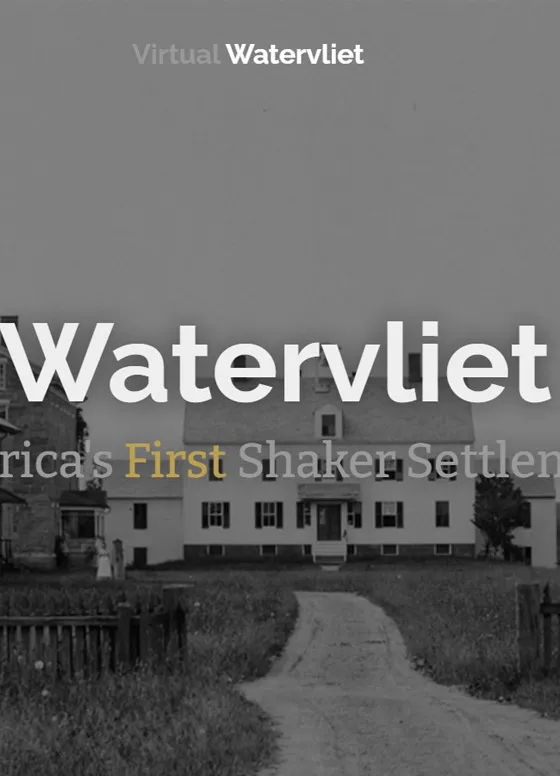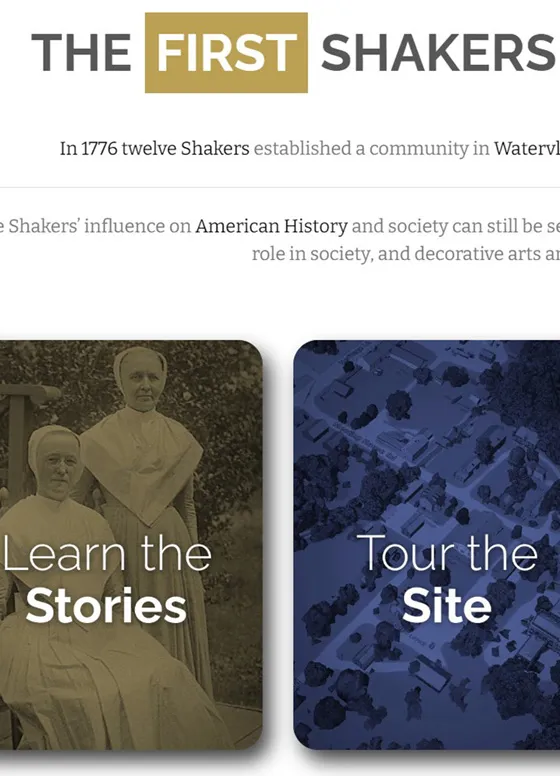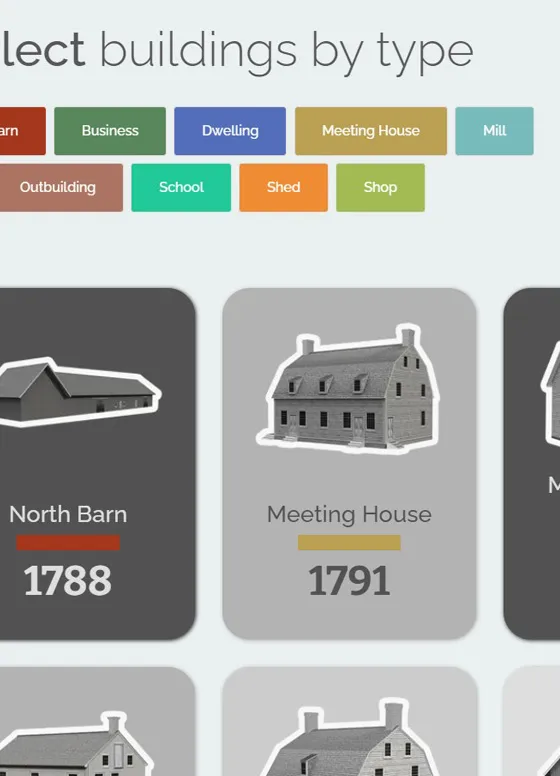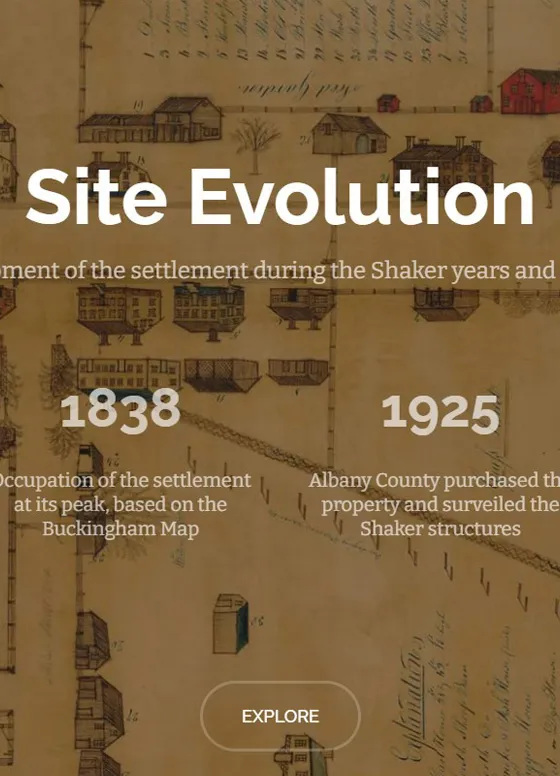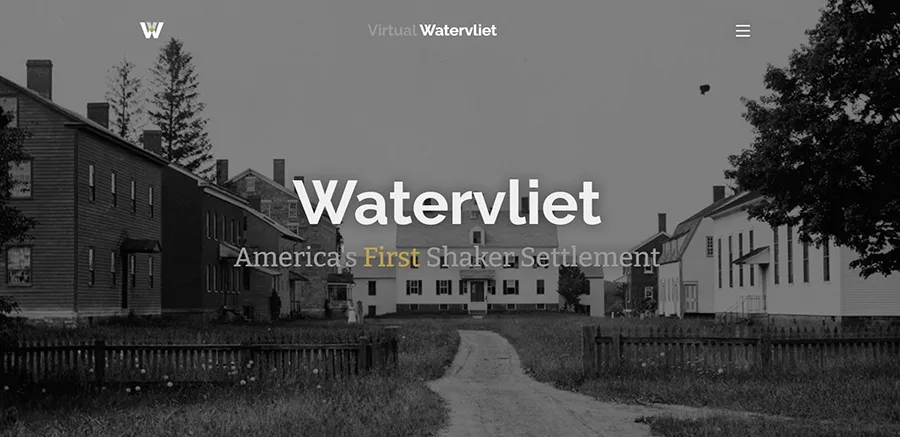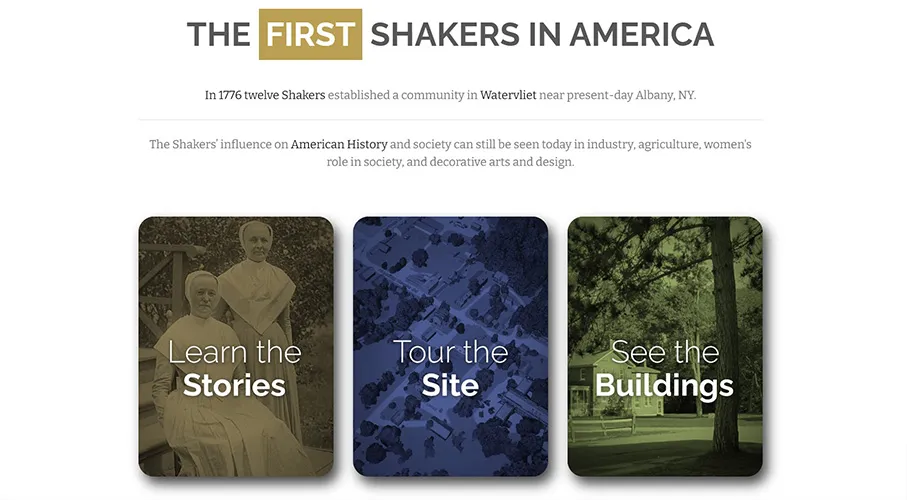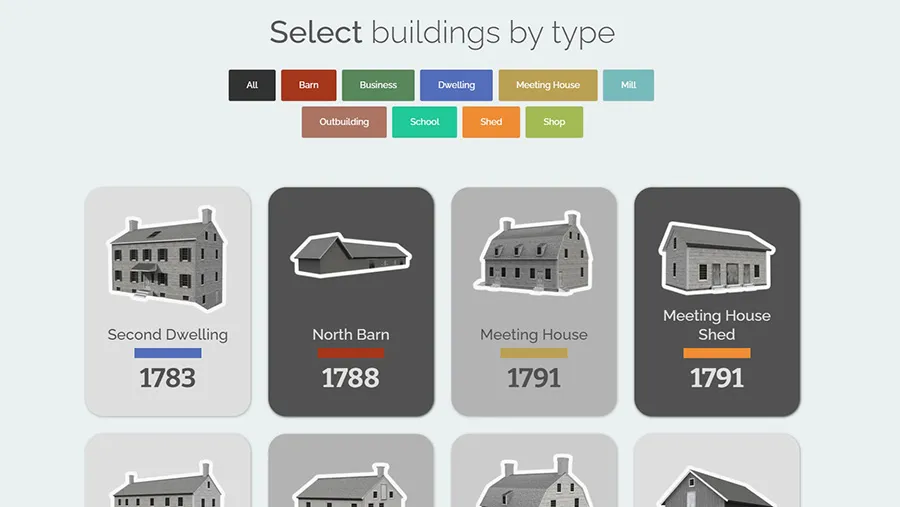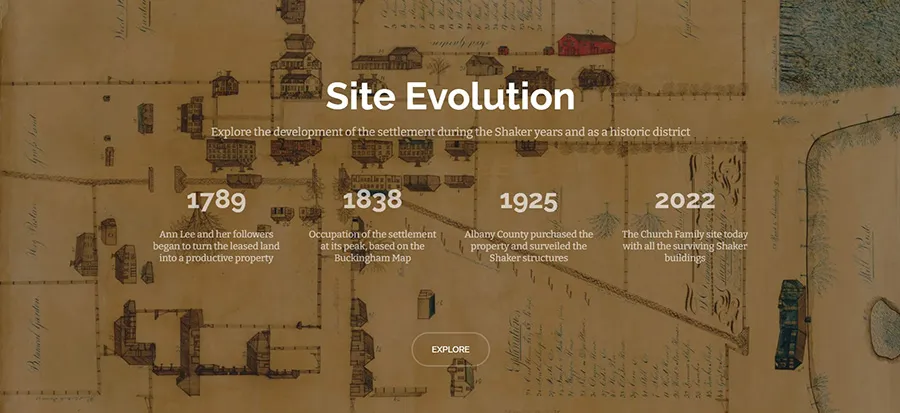Virtual Watervliet
In 2012, Virtual Grounds partnered with the Shaker Heritage Society to develop a digital reconstructions of the buildings and lands of the First Shaker Settlement in America.
The Virtual Watervliet project allows Shaker Heritage Society (SHS) to achieve its mission to cultivate an interest in Shaker history while increasing awareness of the historic site of America’s first Shaker settlement and support for its preservation. The portal was redesigned and relaunched in 2023, with an updated 3D tour of the Church Family grounds based on the 1838 Buckingham Map.
Client: Shaker Heritage Society
-
The Goal
Bring back to life the Shaker settlement in its heydays and virtually rebuild the grounds of the Church family, one of three areas occupied by the Shakers in Niscayuna, Greater Albany, NY.
-
Map-based Digital Reconstruction
The reconstrucion was centered on the historical Buckingham Map, drawn by one of the Shaker Elders in 1838. It depicts the Church Family in its prime and details the structures used by the Shakers in daily life.
-
A Tool to Understand the Site
The 3D models were assembled as a web portal, an atlas of the Church family providing information on the occupation of buildings and lands. It was extensively used by the society when preparing lesson plans and educational content.
